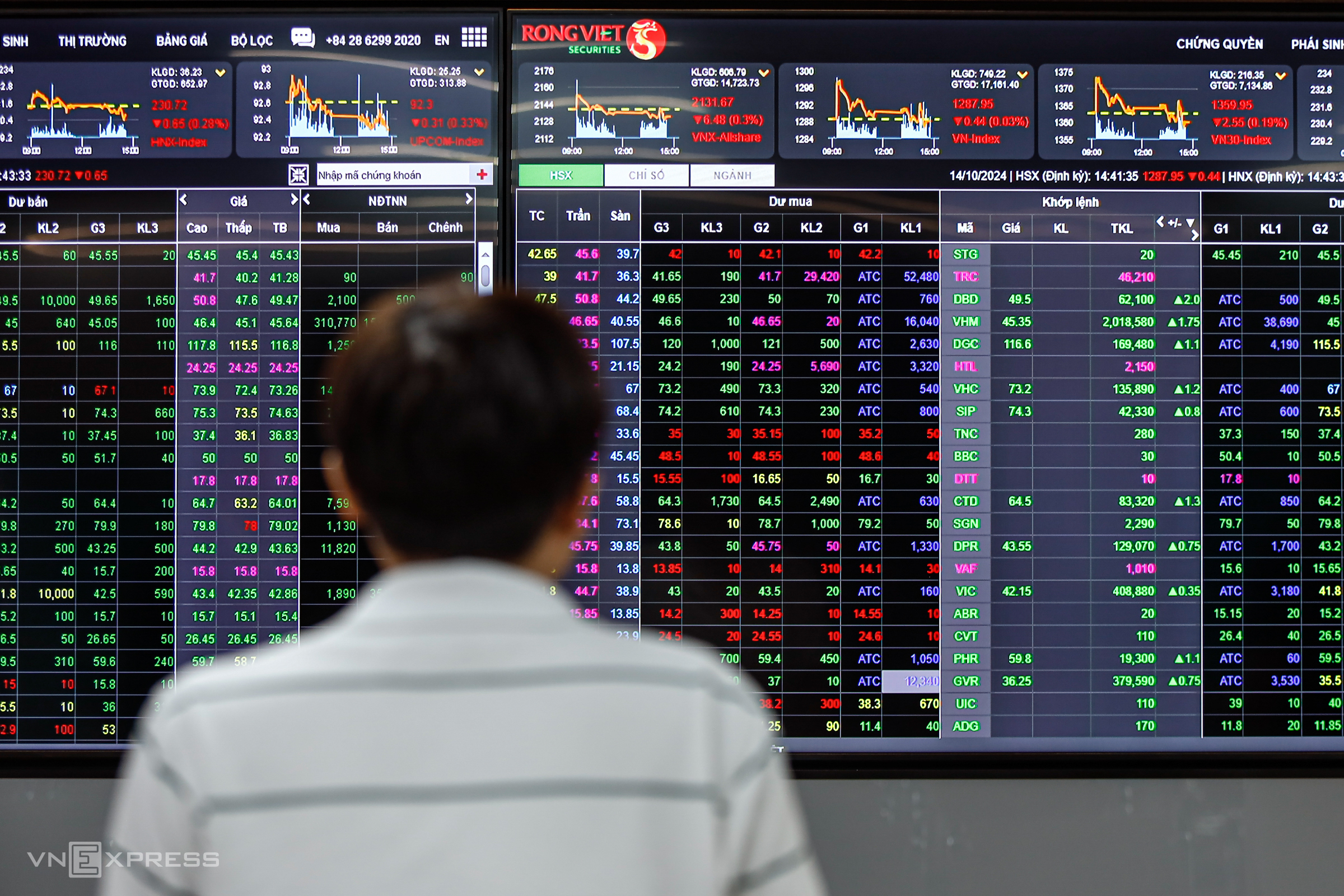In a recent report, SGI Capital, the management company of The Ballad Fund, highlighted the VN-Index's five-month continuous rise since its April low, gaining almost 60% without any major correction exceeding 10%. This marks one of the fastest and strongest rallies in the history of the Vietnamese stock market, primarily fueled by domestic investment.
SGI Capital acknowledged that this uptrend exceeded their expectations. They described the increase as "very rapid," reflecting high expectations and positive news. Consequently, they anticipate a potential 10-15% correction for the VN-Index.
With the index closing above 1,682 points at the end of August, the market risks a drop to around 1,430-1,514 points. Based on the closing figures from the first week of September, the VN-Index could correct to between 1,417 and 1,500 points.
Supporting their prediction, the experts pointed to data showing the VN-Index's 35% increase as of the first week of September, placing it among the top three global performers in 1-month, 3-month, 6-month, and year-to-date growth. Trading value frequently reached 40,000-70,000 billion Vietnamese dong per session, the highest among ASEAN markets.
However, last month saw unfavorable macroeconomic shifts, including rising government bond yields and interbank interest rates remaining above 4%. The USD appreciated 3.5% against the Vietnamese dong, raising concerns about currency and macroeconomic stability. This contributed significantly to the persistent net selling by foreign investors in the Vietnamese stock market compared to other regional markets.
Combined with exchange rate and interest rate pressures, along with rising gold prices, new deposits stalled in late August, causing trading value to decline. Conversely, margin lending, already at a record high in Quarter II, may continue to rise sharply in Quarter III. This could push margin ratios against cash, capitalization, and liquidity to new highs, creating potential selling pressure if the market corrects significantly.
Unlike the 2023-2024 period—when the market was subdued and margin increases were mainly due to borrowing by major shareholders and business owners for business capital needs—margin is now being used more by individual and institutional clients seeking to optimize investment returns and short-term trading.
"Portfolio restructuring and risk management will be priorities in this period to prepare for future opportunities," emphasized SGI Capital experts.
SSI's September strategy report echoed this view. Their analysts suggest that market pressure may increase significantly next month after the index's impressive growth in the past two months. A more cautious scenario anticipates a sharp correction in September to early October, potentially exceeding previous corrections since the April low.
According to SSI, factors contributing to this correction include increasing exchange rate pressure, the typically less active third-quarter earnings season, and profit-taking after August's strong recovery. They also cited historical data showing the market often experiencing corrections of over 7% during uptrends, especially after rapid gains exceeding 20% within three months. The VN-Index has risen 50% in the past three months without any decline greater than 4.5% since its April low.
Sai Gon - Ha Noi Securities (SHS) noted that following strong rallies or surpassing historical peaks, the market typically undergoes a correction and consolidation, retesting the previous peak. Therefore, in September or the last quarter of the year, the market may face pressure to retest the 2022 peak.
SHS anticipates several challenges for the market starting in September, primarily the impact of countervailing duties on businesses, reflected in third-quarter earnings. After the significant credit growth in Quarter II, credit growth may slow in Quarters III and IV compared to previous years, especially towards the year-end. The market also faces concerns about exchange rates and rising inflation.
"The market will be highly differentiated in September and the final quarter, depending heavily on the business prospects of each sector and company. This scenario favors positions aligned with growth trends," the experts predicted.
 |
Investors monitor the electronic board at a securities company's headquarters in Ho Chi Minh City. Photo: An Khuong |
Investors monitor the electronic board at a securities company's headquarters in Ho Chi Minh City. Photo: An Khuong
However, all parties emphasized that this correction is within an upward trend, maintaining a positive long-term outlook. SHS identified two key pillars for a sustained uptrend: expectations of high GDP growth above 8% and new growth drivers from resolutions on scientific and technological breakthroughs, international integration, legal reform, and private sector development.
SSI noted that the stock market currently offers an earnings yield of 7.7%, exceeding other major investment channels like bank deposits (interest rates around 5-6%), real estate (rental yields 3-4%), and gold. "Therefore, a strong correction in the coming period, if it occurs, could present an opportunity to accumulate stocks for long-term investment," they concluded.
Tat Dat












